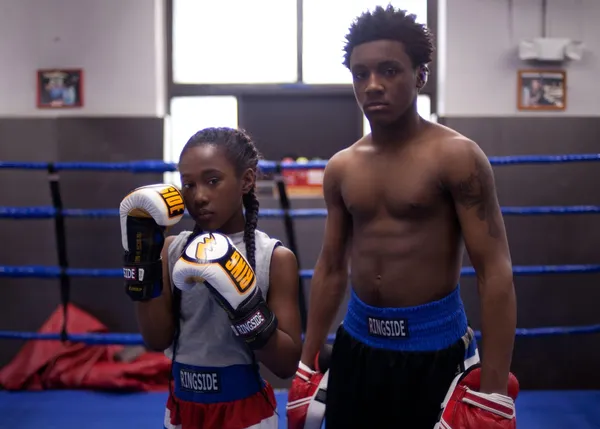AW: Tell me about how you created the story because tales of young, gifted black kids aren't exactly thick on the ground - and it's a good story to tell.
ARH: The original script is based on some real-life phenomenon of hysterics in groups of teenage girls. Originally the concept had nothing to do with groups of black girls - we were actually looking at a real-life episode that happened with a group of all-white girls who were cheerleaders. We both had been working loosely with dance films and I wanted to place it the dance team instead of a cheerleader team. We started looking at different types of dance and completely fell in love with drill. We decided to cast a real drill team, so all of the girls in the film are in the same drill team and they happened to all be black. So we started to work with them to match our concept of the film with their reality and the real team. I think that the film started to incorporate a lot of scenes that we didn't imagine from the beginning but it's something that's just incredible that the girls brought to the film and the authorship that they brought to their characters.
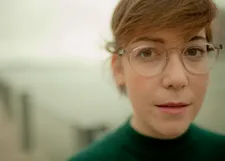 |
| The Fits director Anna Rose Holmer, the kids 'just blew me away every day we were on set' Photo: Tayarisha Poe |
ARH: For me, this is a movie about the body and specifically Toni's body moving through these early stages of adolescence. It's a very physical movie and we always envisioned it as a dance film from beginning to end. So even when she's doing sit-ups and pull-ups or when she's walking down the hallway, all of those were considered choreographies and we worked with a movement consultant, Celia Rowlson-Hall, who's a modern dancer, to really consider all of those little movements that Toni makes. Even when she's working with her brother in the boxing gym, we choreographed that sequence and really thought of it as dance. For me, that was a real joy to see those movements come across on screen and lean on those instead of dialogue.
AW: Did it help you that you'd previously worked on documentaries with dancers? Was that a way into the idea?
ARH: I think shooting dance is particularly challenging and I had the privilege of learning a lot of that first-hand from shooting verité footage. You have to tune in to the dancer's body when you're shooting verité footage and start seeing the smaller movements of their bodies, knowing when they're going to be move left or right, when it's unscripted. I do think that helped me focus. And I co-directed a really small documentary companion [A Ballet in Sneakers: Jerome Robbins and Opus Jazz] to NY Export: Opus Jazz and was a producer on Ballet 422, a film by Jody Lee Lipes, and those adaptations of what dance on film could look like was really inspiring as well.
AW:The way that you use the geography of spaces through the film is noticeable. You're using the spaces Toni is occupying in almost an austere way, when she's on the bridge or in an empty swimming pool, with symmetry to it.
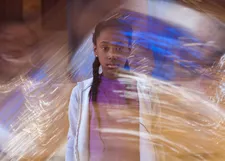 |
| Royalty Hightower as Toni in The Fits. 'Even when we went outside, we wanted to keep her enclosed' Photo: Tayarisha Poe |
AW: You steer away from cliched ideas of adolescence. She's not really an outsider, she's just on the fringes. The idea of a person being reticent rather than ostracised. How important was it for you to explore that?
ARH: There's a lot of myself in Toni and it's not to so much that she is an outsider because she's being judged by others but because she really doesn't know who she is at this moment in her life, so it's hard for her to fit in anywhere because she hasn't defined who that is yet. So that was really important to me - capturing that moment, especially with female identity being so tightly connected with the body, without it being hyper-sexualised. I think that sexual identity, gender identity is a big part of the film but I wanted Toni to have the freedom in those first moments of saying, 'Who am I?' and 'What group do I want to fit into?' and 'What does that mean for my self-identity?'
AW: The fluidity of identity reminded me of some of the films of Celine Sciamma, who is also interested in the fluidity of adolescence. Toni is literally going from the boys to the girls but also mentally making the decision. It's not because she's necessarily having a gender question in her own head, she's just finding her own place.
ARH: I wanted to lift those gender questions from sexuality, so that they weren't tied, in this instance, with Toni. But that she really was considering her body in this space and these two groups. So we made these very distinct spheres - the boys' world and the girls' world and she's the ball that's being kicked between those two spaces.
AW: In terms of using an actual team in the film, was the main star Royalty Hightower, who plays Toni, part of the team too?
ARH: Yes, all the girls, in the background and speaking roles are all on the same team. The boys are also all non-professional. They're amateur boxers but from the same community in Cinncinnati.
AW: How was it working with people who had never been on film before?
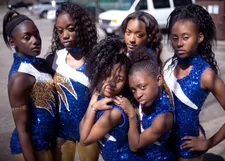 |
| 'It's not about Toni losing herself completely to this group of girls but about projecting who she wants to be in that group.' Photo: Tayarisha Poe |
She's in almost every single shot. So she had to really understand this journey and take on Toni's journey as her own. It was incredible to have those kind of intellectual conversations with her, which is very rare because she's a 10-year-old girl. The best thing about all these kids is that they're professional athletes, so they understand dedication, they understand putting in the work and they compete at high levels nationally, so they're used to the pressure and they're used to engaging with adults. They have discipline, which is a gift, and they just blew me away every day we were on set.
AW: The music by Danny Bensi and Saunder Jurriaans - like so many of their scores - is very unusual and quite intense and I wondered if she could tell me a bit about her input in that and why she chose them.
ARH: Danny and Saunder have scored some films in our friend group and they did the music for my producer Lisa Kjerulff's documentary feature Northern Light which is directed by Nick Bentgen. Lisa sent them an early cut of The Fits and they connected with the film right away. We discussed using woodwinds in a non-traditional sense by including the sounds of the breath through the instruments, the vibrations of the reed and the sounds of the pads as they were played. The score was conceived to accent the internal turmoil that Toni's body is undergoing throughout the film and to heighten this sense of quiet discomfort. When Danny and Saunder brought the sound of clapping to the score, we all knew something magical was happening. The collaboration was very organic and fluid.
AW: I don't want to give too much away, but can you talk a bit about your use of fantasy within the film.
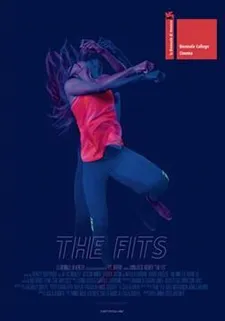 |
| The Fits poster |
AW: Finally, I wanted to ask you how the Biennale College process has helped you?
ARH: It's been an incredible year and a real gift. I think they most special aspect of the College was getting to go through the entire year with my producer Lisa and having her involved really early on in the development of the story. I developed it with her as well as my editor Saela Davis and bringing them in at the development phase was just tremendous. I learned so much from both of them. But in this incubator setting, knowing we had this timeline tick, tick, tick the whole year was great, because it forced me as a director to make a lot of decisions and not second guess and not look back. It was fast and intense but I think that of first time directors get lost in that self-doubt and I wasn't afforded that luxury of doubting. And it propelled us forward.











